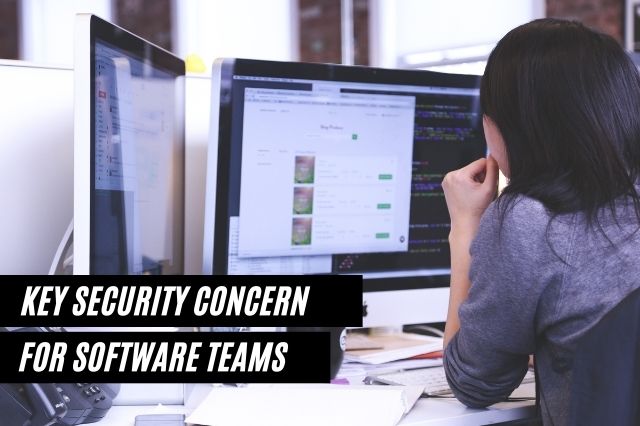7 Key Security Concerns for Software Teams (and What You Can Do About Them)

Mistakes in software code, whether they’re in commercial or in-house applications, remain the biggest security risk for consumers. These coding errors leave systems vulnerable to attacks, resulting in breaches and network compromises. This standard error and many others on this list are still being incorporated into the software, and it’s important that they’re fixed immediately. In this article, I am sharing 7 Key Security Concerns for your Software Teams.
So let’s start:
1. Educate Your Team on Security Software:

It’s essential to start getting serious about your software’s security early on in its development. Implementing a security system early on will allow your team to schedule updates around its code and prevent your team from forgetting about it entirely. Security teams, whether they’re on the primary team or not, should create an ongoing effort to keep these systems live through the development cycle. Doing so will help your program experience fewer vulnerabilities. Communication by monitoring employee computer can be easier while working.
2. File Security When Working Remotely:

Although file security is within the scope of software development teams; remote workers often overlook file security. There are plenty of challenges that come with mobile employees, like VPN slowdown, data sprawl, and poor technology implementation, but Triofox can fix these issues and more. With proper file security through a mobile server, your software remains secure, regardless if it’s in the initial planning stages or on its four-hundredth scheduled update.
3. Test Your Software Multiple Times:
Relying on a single software security test is a big mistake because no tool can catch every flaw the first time. Dynamic analysis tools are capable of catching one set of flaws, while static tools can see others. Use both together while you attempt to find information leakage, cryptography issues, and other security weaknesses. The occurrence of security issues due to failure of code testing. So, conduct regular tests to ensure you’re catching everything at once.
4. Try Out Agile Development or DevOps:
DevOps is the combination of tools that increases your ability to deliver more applications at a faster rate. Agile refers to a group of software dev methodologies based on iterative development, where solutions evolve through collaboration. Both options may be needed in security teams who need an outside perspective. It’s difficult to see security leaks when you’re staring at the same thing, as it tends to meld together, and mistakes become less obvious.
5. Look at Open-Source Components:

In software development, one glitch or vulnerability can turn into several after fixing part of the damaged code. It’s one of the most frustrating parts of being a programmer, but thankfully, many open-source components are available for this very problem. Still, you need to be careful when implementing someone else’s code, as that could leave you open to other issues. Always test your software after fixing or editing your files. Otherwise, you’ll drag down other components.
6. Create and Follow Your Metrics for Success:
Not all software companies are made the same. Different industries need to focus on different vulnerabilities before moving on to less important matters. For example, Government software often has cross-site scripting issues, while healthcare software struggles with cryptography. Your security team should be aware of the most common coding mistakes in your industry; which are covered by automated testing and significant application overhaul, if necessary.
7. Prepare for the Future Possibilities:

The best security teams are able to collaborate and form goals that support a collaborative culture. However, some software development studios will silo their efforts and not share problems with their applications with anyone but their direct team members. In the future, your team needs to be aligned with the CEO’s needs and development standards.
At the same time, security teams need to support innovation to ensure they’re evolving software features to keep up with market fit. Conducting regular reviews of employee outlook and their view of company products is essential for fostering growth in your company. So these tips on security concerns for software teams will help you to get the best results.
